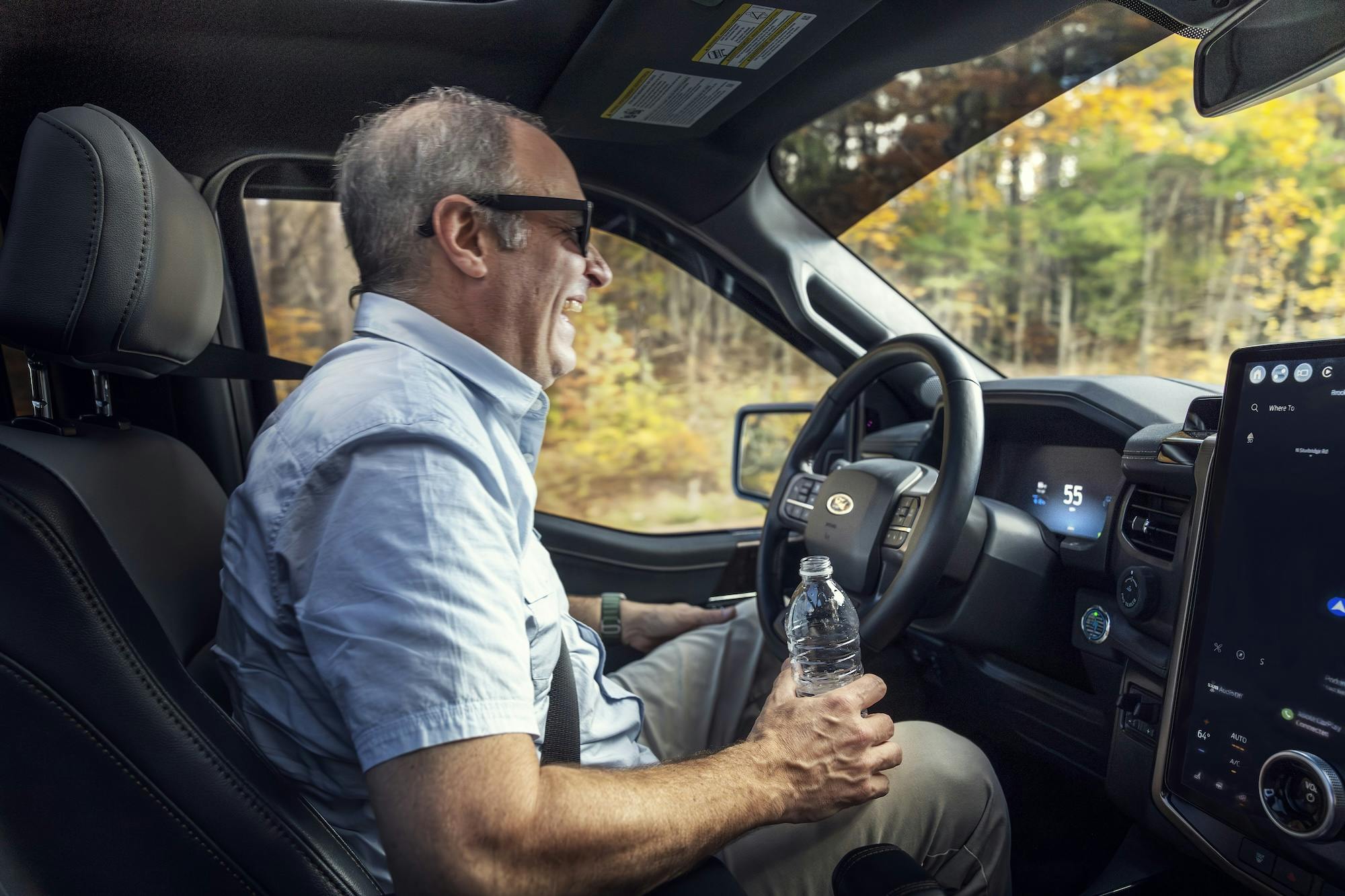Media | Articles
Ford Patent Application Seeks to Give Its Cars Surveillance Capability
The story arguably broke on Newsweek.com last week with this provocative statement: “Ford, one of the world’s largest U.S.-based automakers, is trying to patent an invention that could allow cars to monitor the speed of other vehicles and share traffic violation reports with and between police cars—a technology that could revolutionize speed surveillance on the road.”
That’s right: Ford’s “Systems and Methods for Detecting Speeding Violations” patent request could lead to drivers of its products tattling on each other for exceeding the speed limit. In it, Ford explores the option to use the tech in its cars to monitor other driver’s speeds. If the speeding vehicle is close enough, the car could use onboard cameras to photograph it, including photos of the driver, the license plate, and other identifying characteristics. Those photos, plus details on the speeding violation, could then be forwarded to a nearby police car or a roadside data terminal.
Ford has responded to inquiries by saying that only professional law enforcement vehicles would get the equipment, but the possibility exists that if granted, it could make its way to consumer and fleet vehicles.
To wit, while the patent application says it certainly prefers that it is used by law enforcement officers, “In other scenarios, the [radar-equipped] vehicle can be driven by various other types of individuals, such as, for example, an emergency services responder or a private security officer.”
And, while speeding is the violation that has grabbed headlines, evidently Ford’s tech is capable of identifying quite a bit more: “It must be further understood that the description herein refers to detecting speeding violations, which is merely one example of a traffic violation,” the application says. “Accordingly, the systems and methods described herein are equally applicable to any of various other types of traffic violations including for example, improper lane changes, rash driving, driving with an expired license, driving with no registration, driving under the influence, etc.
Marketplace
Buy and sell classics with confidence
“Thus, in an example scenario, a speeding violation responder system may capture an image in accordance with the disclosure upon detecting a vehicle that is weaving haphazardly (even if traveling below a speed limit). The motion of the vehicle may be indicative of the vehicle being driven by a driver who is under the influence of alcohol.”

There’s also this: “In another example scenario, the [surveillance-equipped] vehicle is an autonomous vehicle, and the vehicle controller performs some or all of various operations that may replicate those performed by the law-enforcement officer.” In other words, this technology may be employed on autonomous vehicles to report a violation to law enforcement.
The website Therecord.media requested a statement from Ford, and received this response via email: “The patent explicitly states this idea for a system is specific for application in law enforcement vehicles, such as the Ford Police Interceptor, as it would automate a capability that law enforcement already have in use today, except this could utilize the built-in systems and sensors in law enforcement vehicles in the future,” a Ford spokesperson said.

There’s no argument that having Big Brother look over our shoulders constantly could reduce speeding, and taking that at face value, maybe it’s a good idea. But there’s still something profoundly creepy about it.
It remains to be seen if Ford’s patent will be granted. Similar tech has been sought before, although in an era when the tech was profoundly less capable. With language that is very similar to that used in Ford’s “Systems and Methods for Detecting Speeding Violations” patent request, this patent application, “System and Method for Detecting and Identifying Traffic Law Violators and Issuing Citations,” was applied for in 2001 and granted in 2004.
Inventor William E. Zierden came right out and said that a civilian automobile could be fitted with his device, the SPDcam: “In the preferred embodiment of the invention, the SPDCam device is mounted to a source vehicle, normally a motor vehicle, such as a police car or private automobile, which can be either mobile or stationary.” Zierden let his patent expire in 2021.






Wow, now your freedom of driving is in jeopardy. The Fast & Furious’s “God’s Eye” is for real. Good by privacy.